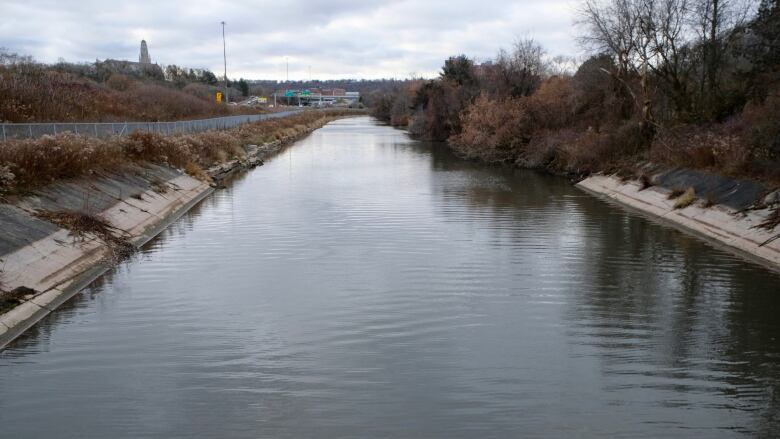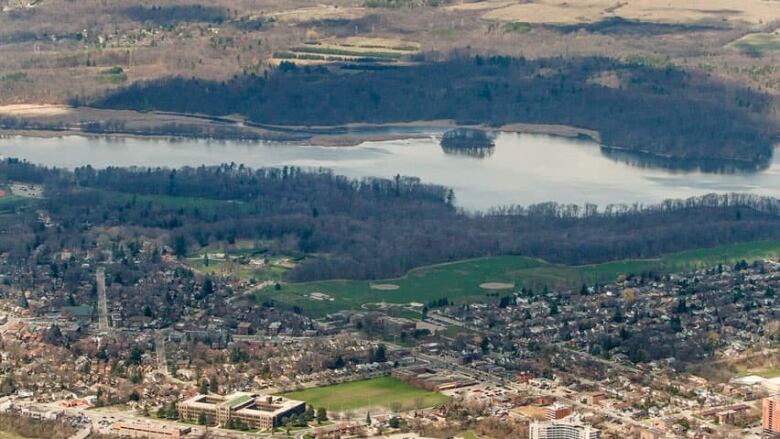City says it can't meet the province's deadline for cleaning up Chedoke Creek
Permits and applications will take the city's plan well past October

The city's projectedtimeline for dredging Hamilton's Chedoke Creek after 24 billion litres of sewage and stormwater entered the waters over four years probably won't meet the province's deadline.
In fact, it says it will go about a year past the fall deadline.
The Ministry of Environment, Conservation, and Parks ordered the city to dredge the creek, and mandated that it submit a work plan for remediation by Feb. 22. The order also required that the remediation be completed by Oct. 31, 2021.
But the plan, which was presented at city council's general issues committee Wednesday, hasthe city finishing work in the summer of 2022 not October of this year.
Andrew Grice, director of Hamilton Water, said the ministry is aware of their timeline.
"We seem to be walking hand-in-hand with [the ministry] on this," he said. "And although they have not changed the overall deadline at this point, they fully understand the challenges that we are facing and are agreeing to work with us as we move forward."
Ministry not 'amenable' to extending, city says
The city says in its latest report that theimposed deadlines are "tight" and a "challenge." Ninety per cent of the design, according to the city's timeline, isn't expected to be completed until July 2021.
But thisextent of design is required, the report says,to access permit applications. The city said a primary scheduling problem is that the speed of permits and approvals from the provincial and federal government.
The city expects nine agencies will be interested, includingHamilton Conservation Authority.
The ministry has "not been amenable" to extending,the city said in thereport, but has agreed to review the timeline.
The cityretained Wood Environment and Infrastructure for the remediation, who prepared the report.
It must submit a Cootes Paradise report by March 22, 2021 to propose remediation and mitigation methods for thatarea, as well as the harbour. Since "you can't necessarily chase or track" the material that flowed out, said Grice, it will look at offsetting the impact.
Staff will give council aseparate update on these plans before the March deadline.

In January 2014, a bypass gate at the city's combined sewer overflow (CSO) tank at Main and King streets was left partially open. Over four years, 24 billion litres enteredChedoke Creek, whichflows into Cootes Paradise and into Hamilton Harbour.
Following a ministry investigation into the leak, the province charged the city.
A court summonsdated Dec. 8, 2020 outlines the charges,which are both linked to causing or permitting raw sewage to be discharged.
More information needed for design
The report says more information is required for the design and permits, which involves collecting information on four identified species at risk in the area and on the total soft sediment volume that was discharged. That amount is estimated at5,600 metres cubed.
"The time from now until we get, call it 'shovel ready,' that is the most complicated part of this work," Grice said. "Once we're actually in the field...it'srelatively routine."
After consultations with the Royal Botanical Gardens, he said, they'll request a formal extensionfrom the ministry.
He said the second part of the order,focusing on the watershed and Cootes Paradise, has a more "in depth" stakeholder consultation process, involving conservation authorities, the Bay Area Restoration Council, Environment Hamilton, Indigenous water walker groups, among others.
Design plan
Ron Scheckenberger, project manager with Wood Environment and Infrastructure Solutions, said there are different ways to remove the sediment. Right now, they're looking at a hydraulic process, where the material would be sucked up and brought to an area where it can dry. Then it can be removed by trucks.
He said the wastewater would be put in the city's sewer system, and not during storm periods.
Here's how the report breaks down the time it would take to come up with the project design:
- Thirty per cent of the design will covered in May to June 2021. That includesdeveloping project limits, preparingpreliminary concepts/drawings, and other steps.
- Sixty per cent of the design will be created in June to July 2021. This is when the method of dredging will be decided, along with aspects like trucking routes and an engineeringcost estimate.
- Ninety per cent of the design is expected by July 2021. This kicks off the permit process, and involves environmental, cultural and erosion control measures and an updated cost estimate.
There is no expected date for the final design, because the report says that'scontingent on permitting. That design will include the final costs, specifications for the tendering process, and changes from a regulatory review.
Contractors will be short-listed between March and May 2021. The request for tender is timed between July and August 2021, but might be moved to correspond with the permits in case amendments to the contracts are needed.
Construction is expected to take four to sixmonths to complete.
The city says itcontinues to meet withrepresentatives from the ministry's local office and staff from its species at risk branch.












_(720p).jpg)


 OFFICIAL HD MUSIC VIDEO.jpg)
.jpg)



























































































